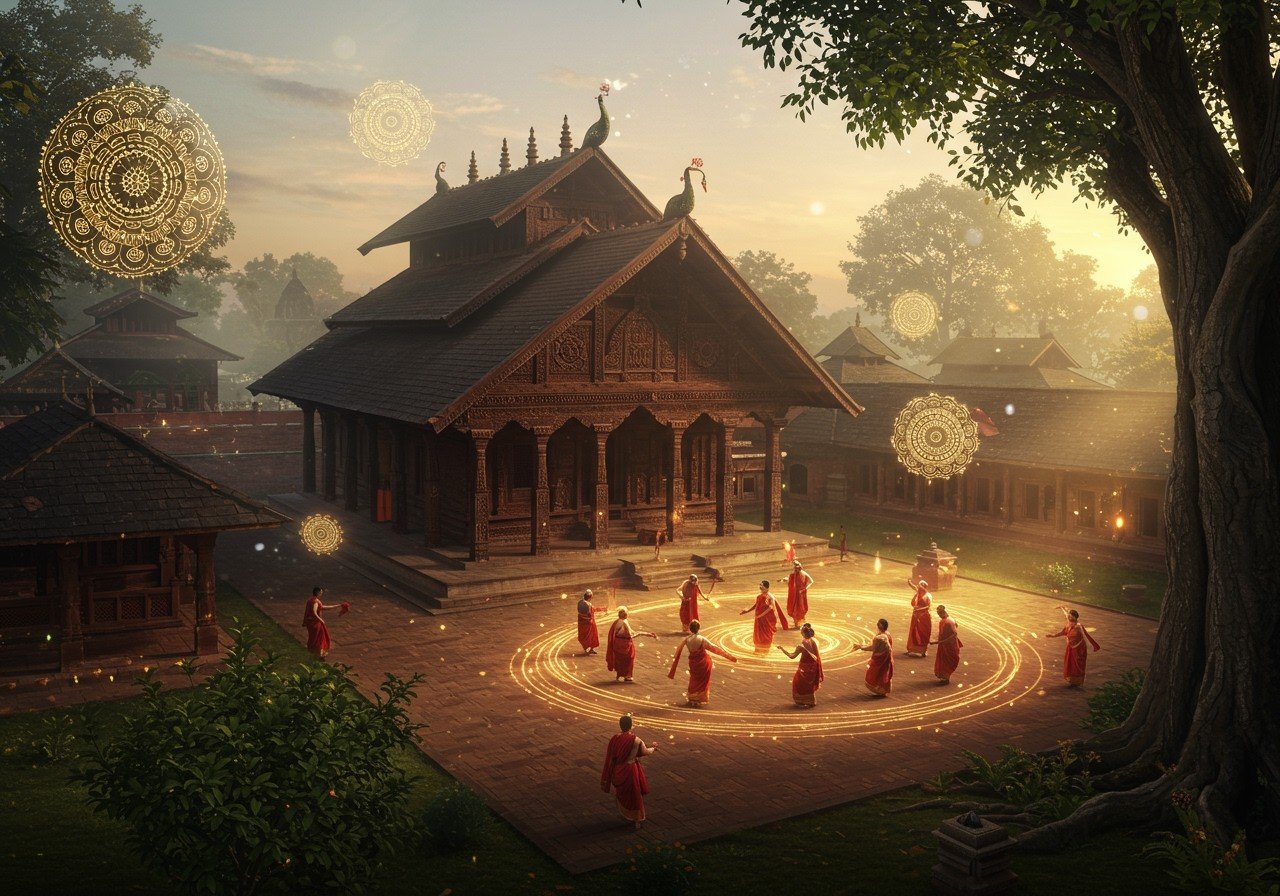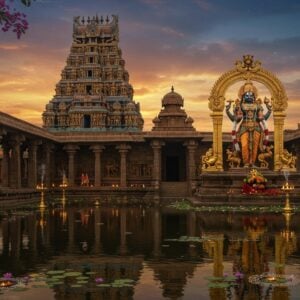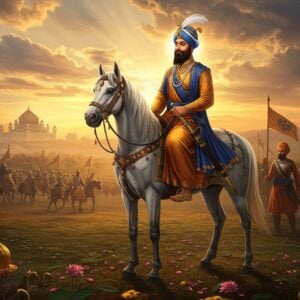
Sankardev’s institutions, known as Sattras, are integral to Assam’s history and cultural fabric. Founded by the revered Srimanta Sankardeva, these centers have profoundly shaped the spiritual, cultural, and social landscape of Assamese life. Delving into the history and significance of these institutions allows us to appreciate their enduring relevance in contemporary society.
Historical Background of Sankardev and His Institutions
Srimanta Sankardeva, born in 1449, was a pivotal figure in the 15th-century Bhakti Movement. His teachings emphasized devotion (bhakti) to Lord Krishna and challenged prevailing social hierarchies, advocating for equality and fraternity. Sankardeva’s philosophy led to the establishment of Sattras – monastic centers designed to foster religious practice, cultural expression, and community living. These institutions became vital hubs for education and artistic development, giving birth to unique art forms like Ankiya Naat (dance-drama) and Borgeet (devotional songs).
Dhekiakhowa Bornamghar: A Journey Through Time
The Role and Structure of Sattras
Sattras represent cornerstones of Assam’s cultural heritage. Established by Srimanta Sankardeva, these monastic centers embody the essence of the neo-Vaishnavite movement, serving as vital centers for religious expression, artistic creation, and social reform. They actively promote unity and devotion to Lord Krishna. At the heart of each Sattra lies the “naamghar,” or prayer hall, serving as a central space for spiritual gatherings and communal worship.
-
The Sattradhikar, the leader of the Sattra, provides spiritual guidance and leadership to the community.
Monks, known as “bhakats,” dedicate themselves to spiritual practices, and some may choose a life of celibacy.
-
Beyond spiritual practices, Sattras nurture and preserve various Assamese art forms.
Sankardeva and his disciple Madhavdeva enriched Assamese culture with Borgeet, evocative devotional music, Ankiya Naat, a powerful form of dance-drama, and Sattriya Nrittya, a classical dance form, all of which contribute to a rich tapestry of cultural expression.
-
The architectural design of Sattras typically features a central naamghar surrounded by living quarters for the bhakats, fostering a close-knit community grounded in shared beliefs and practices.
These institutions serve as repositories of Assamese literature, art, and traditional values, playing a crucial role in safeguarding the cultural heritage of the region.
Sankardev Kalakshetra, Sankardev Sishu Niketan, and Sankardev Academy
These three institutions further extend Sankardeva’s legacy:
-
Sankardev Kalakshetra: This cultural complex celebrates Sankardeva’s contributions to Assamese culture. Its design draws inspiration from traditional Assamese architecture, serving as a living testament to the region’s heritage.
Kalakshetra hosts exhibitions and performances showcasing Assamese art, music, and history, while its museums house artifacts that narrate the story of Assam’s past. It serves as a significant cultural attraction for both locals and tourists.
-
Sankardev Sishu Niketan: This educational institution integrates academic learning with the moral values central to Sankardeva’s teachings.
It emphasizes Assamese language and traditions, nurturing a sense of cultural identity and social responsibility in young learners, contributing to the preservation of Assam’s rich cultural fabric.
-
Sankardev Academy: This academy focuses on advanced studies and research in arts and culture.
It offers courses delving into Assamese traditions and Sankardev’s philosophy, promoting scholarship and research on Assamese literature and performing arts. The academy serves as a vital link between the past and present, ensuring Sankardeva’s legacy remains vibrant in modern times.
Poojn.in: Supporting Your Spiritual Journey
Poojn.in empowers devotees to connect with Sankardeva’s spiritual legacy by providing authentic puja items and materials essential for Sattra rituals. As India’s leading Dashakarma bhandar, we offer a wide selection of items crucial for Sattra worship, including:
- Pure cotton gamochas and dhotis (traditional attire for Sattra prayers)
- Brass and copper utensils for naam-prasanga
- Traditional musical instruments (khol and taal)
- Pure ghee and other offerings for Sattra rituals
- Sacred texts and religious books on Sankardev’s teachings
We ensure secure, pan-India delivery, detailed product descriptions, quality checks, and dedicated customer support, especially for bulk orders. Explore our collection at poojn.in.
The Enduring Legacy of the Sattras
Sankardeva’s Sattras continue to flourish, embodying a rich tapestry of spirituality, culture, and education in Assam. Each Sattra serves as a testament to enduring values of unity and devotion, inspiring a deep connection with Lord Krishna. These institutions offer a bridge between tradition and modernity, inviting engagement with Sankardeva’s teachings and fostering pride in Assamese heritage.
While challenges of preservation and adaptation persist, the wisdom and cultural richness embedded within Sankardeva’s legacy continue to guide and inspire. His teachings resonate deeply within the community, fostering harmony and a sense of shared identity. Sankardev’s influence extends beyond the past, remaining a living force that shapes lives and enriches the cultural landscape of Assam, ensuring its vibrancy for generations to come. Read more about Assam’s Spiritual Heart.


